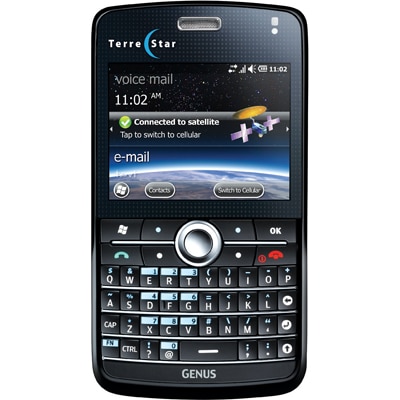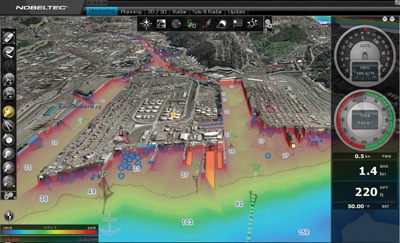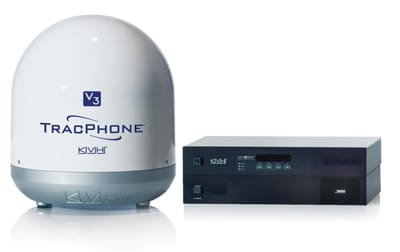
Double Duty
The newest player in the satellite communications market is TerreStar, which makes a hybrid device called Genus ($799), a smartphone that doubles as a satphone, which must be activated for voice and data through the AT&T network. To get satellite connectivity on top of AT&T cell service, you pay TerreStar $25 a month for service, plus 65 cents a minute for satellite calls and $5 a megabyte for data. Coverage in satellite mode extends 200 miles off the U.S. coast, but also into waters off Alaska, Puerto Rico and the Virgin Islands. Satellite calls are made using spot-beam technology and the biggest commercial communications satellite ever launched. Using the windows Mobile 6.5 operating system, Genus has the look of a contemporary smartphone and all the functionality that we expect. The TerreStar Genus supports tethering to a laptop in both cellular and satellite mode, though data transmissions are way slower in satellite mode and best for SMS texting. TerreStar Networks, 877-878-2701; www.terrestar.com

Nobeltec Meets Furuno
Nobeltec brings to market PC navigational software very different from its traditional product lines. TimeZero Trident ($1,250) looks and performs very much like MaxSea Time Zero, a sister company under Nobeltec’s recent acquistion by Signet. In partnership with Signet, Furuno uses the TimeZero “chart engine” in its multifunction displays. As the name suggests, TimeZero Trident superlatives are speed (zooming and panning in “zero time”). The product also has an uncanny ability to render cartography in three dimensions. In fact, 3-D is Trident’s “native environment,” so switching back and forth between 2-D and 3-D is instantaneous. The PhotoFusion feature displays an “intelligent blend” of nautical charts, satellite photos and 3-D database. Nobeltec Inc., 800-946-2877; www.nobeltec.com

VSAT For The Little Guy
KVH has taken VSAT communications technology and scaled it down to fit on smaller yachts. VSAT is one of two systems often considered for serious connectivity afloat; the other is called Fleet Broadband, which differs in terms of hardware costs, airtime costs and size of the antenna. KVH has essentially changed the game by introducing the TracPhone V3 ($16,995), with a 14½-inch dome, about the same size, and suitable in scale for boats as small as 30 feet. TracPhone V3 data rates are equivalent to cable modem speeds at home, with downloads of up to 2 megabytes per second on KVH’s global mini-VSAT BroadbandSM service. Usage rates are very attractive — internet access and e-mail cost 99 cents per megabyte, while voice calls cost as little 49 cents per minute. This compares with airtime rates of well over $10 per megabyte from Fleet Broadband, even though VSAT passes data through up to 15 times faster. KVH, 401-847-3327; www.kvh.com









